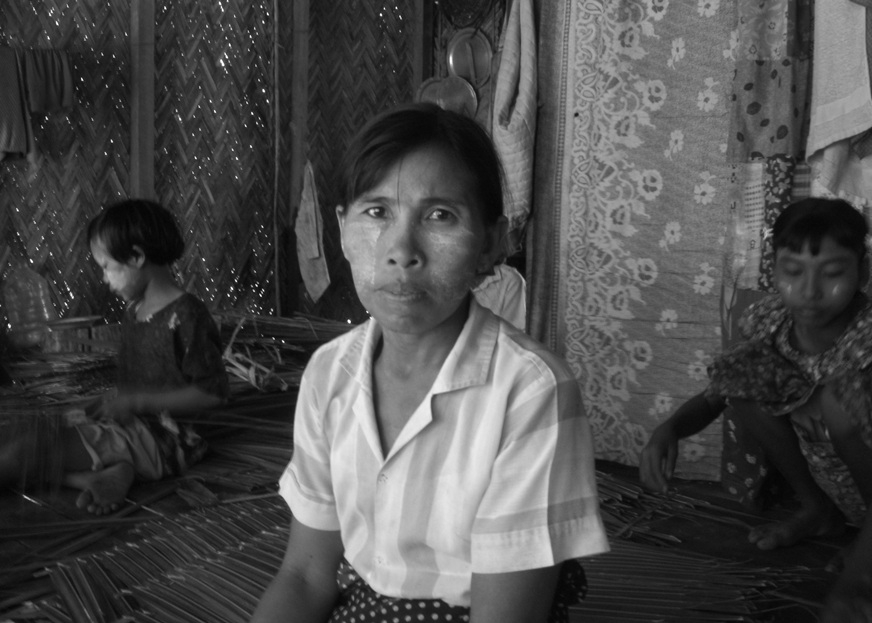“Under the new government things are getting better and opening up,” Shihab Uddin Ahamad, country director for ActionAid, told IRIN. “We’ve got a long way to go, but we’re making progress.”
His comments come less than a week after the UN sent its second convoy of humanitarian assistance into conflict-affected Kachin State, where more than 50,000 people have been displaced since the collapse of a 17-year-old ceasefire between the Burmese government and the Kachin Independence Organization (KIO) in June 2011. The first convoy travelled to the region in December.
Humanitarian access - the ability of aid workers and agencies to reach and assist populations in crisis - has long been difficult for international humanitarian staff in Myanmar.
In the immediate aftermath of Cyclone Nargis in May 2008 - a disaster that left over 140,000 people dead and affected 2.4 million - international aid workers were initially prevented from working in affected areas.
“It can be quite frustrating at times - it’s never been easy,” said one international aid worker who asked not to be named. “The Burmese authorities were quite suspicious of a large number of foreigners coming in at that time.”
However, nearly four years on, most of the complaints now being cited are more of an administrative nature, particularly with regard to work outside Yangon, the commercial hub, and in Myanmar’s cyclone-affected Ayeyarwady Delta.
“Politically, the situation in the country has improved. However, administratively there are a number of bottlenecks that haven’t really improved for many agencies,” said Andrew Kirkwood, a seasoned aid worker in Myanmar and current programme director of the Livelihoods and Food Security Trust Fund (LIFT), a multi-donor fund of US$100 million that assists the nation’s poorest and most vulnerable people.
The bottlenecks include ongoing restrictions on visas, the denial of travel permits to certain areas; limitations on travel permits (there are processing delays, a limited number of permits are issued, they often have short validity) and curtailed access to certain locations. Aid workers must be accompanied by local officials in some areas, while parts of the country, particularly in conflict-affected areas of the southeast, are largely off limits altogether.
Although foreign aid workers can easily travel to the Ayeyarwady Delta today, they still need travel authorization, which can take up to a week to process.
At the same time, memorandums of understanding to operate in the country between an agency and its respective line ministry can routinely take three to six months for approval, and sometimes longer. “The bureaucracy can be quite daunting,” said another aid worker.
But under the new government of President U Thein Sein, who took office in March 2010, there have been positive signs of change.
Until September 2011, access to recently displaced populations was generally not granted (in particular along the southeast border with Thailand), but the situation in Kachin has begun opening up opportunities for engagement, which previously were not there.
Among these opportunities was a request by the government in December 2011 for more partners (UN and NGOs) to provide assistance to the displaced, carry out independent assessments, and dispatch UN supplies and staff to areas beyond government control.
Many parts of Myanmar, particularly in the conflict-affected east, where more than 400,000 people remain displaced, as well as parts of Kachin State in the north, are still restricted.
However, some areas such as Wa, along the Thai-Burmese border, as well as Chin State in the west, are slowly easing. In recent months, in Wa and the Kokang “special regions” - long off limits to international organizations - some organizations have been asked to restart operations following peace negotiations between the authorities and non-state actors.
Moreover, there is increased hope that a string of recent peace initiatives by the government toward a number of ethnic armies could yield further dividends.
“We’re happy with the ceasefires in place, and we hope we will be able to reach more people in need,” noted Hans ten Feld, country representative of the UN Refugee Agency in Myanmar, which currently has only limited access to areas in the southeast.
And then there is the issue of disaster preparedness, and the lessons learnt from a string of natural calamities in the disaster-prone country since Nargis: Cyclone Giri (October 2010), an earthquake in Shan State (March 2011) and floods in the Magwei region (October 2011).
|
Photo: David Longstreath/IRIN |
| Driven out by fighting, Karen refugees have fled to camps along the Thai-Burmese border |
“Under the new government, I’m sure there will be even more collaboration,” an official from Myanmar’s Relief and Resettlement Department remarked.
But while many international aid workers continue to place the onus of responsibility for improving access on the government, many believe the international community should also do its part. “We need to build trust. That’s the way to move forward on this,” ActionAid’s Ahamad said.
Instead of focusing on how many international staff one has on the ground, priority should be given to how the capacity of civil society and the government in delivering assistance can be improved on the ground, he said; a sentiment increasingly shared by others.
“Access is not an issue for us,” said Jessica Chaix, humanitarian programme coordinator at Oxfam. “We support the work of local and national partners who have access and the capacity to do the job right.”
According to government figures, there are 53 international NGOs working in Myanmar today, and close to 300 registered local NGOs.
ds/he
For more, visit IRIN's in-depth: What next for Myanmar?
This article was produced by IRIN News while it was part of the United Nations Office for the Coordination of Humanitarian Affairs. Please send queries on copyright or liability to the UN. For more information: https://shop.un.org/rights-permissions




